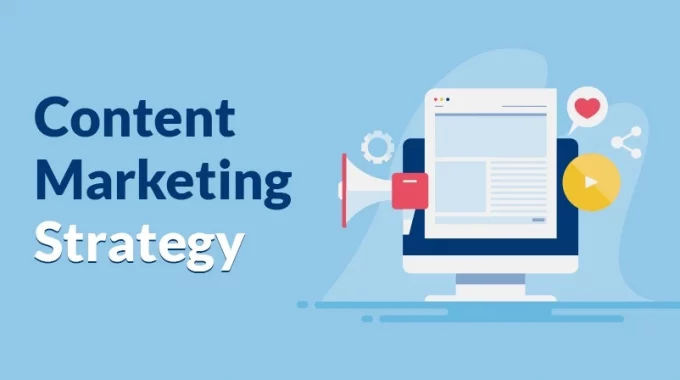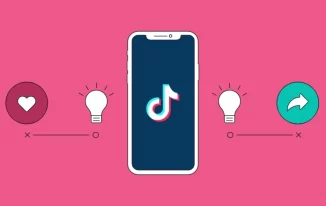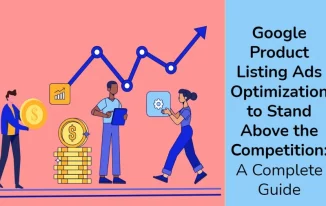Content marketers may attract, engage, and retain their target audiences by creating and distributing relevant articles, movies, podcasts, and other material. All of these content types are intended to offer helpful and pertinent information that excites users and draws them to the business.
Any content marketing plan outlines the creation of high-quality content for their target markets and personas in a repeatable manner that results in consistent experiences across the buyer journey and across digital media.
When it comes time to buy what to sell, this strategy keeps the company top of mind, builds expertise, and fosters brand awareness. The key components for a successful Content Marketing plan should be included.
Because it provides the audience with answers to their queries, content marketing is crucial for fostering relationships, increasing conversions, and generating leads.
Customers now demand constant, high-quality content from their favourite companies. Brand focus, user experience, and content distribution are essential components of a successful content strategy, according to industry experts.
Some of the methods to develop the vital elements:
Document the Who:
- The content marketing strategy's central tenet is your why. who is producing material, whom you are assisting, and how you will be of unique assistance to each of these parties. Typically, businesses employ content marketing to grow their audiences and achieve at least one of these beneficial outcomes, such as higher sales, cheaper costs, or better clients.
- The development, dissemination, and control of relevant, useable material, on the other hand, are covered in greater detail by content strategy. As it assists firms in managing all of their material, the content strategy frequently goes beyond the scope of a content marketing strategy.
- Given how complex people are, this is a topic that might be studied for months or even years. Different organisations use various techniques to cultivate this in-depth understanding for their story-telling.
Explore a big idea:
- Every successful business or product begins with an idea. But how can a small concept develop into a large idea that leaves your audience speechless? It's simple to get caught up in the trap of creating content without a solid plan for your content strategy. If your organic traffic isn't increasing month over month or if you find yourself spending money on advertising to obtain readers, your content strategy certainly lacks a major idea.
- To seek out a business concept that is novel, sometimes counterintuitive, and, most importantly, advantageous to the people we are trying to serve. Therefore, a strong statement of the most compelling value of the good or service can do the trick in the event that a creative Big Idea for the marketing story doesn't materialise. A big idea is one that is immediately recognised as significant, thrilling, and advantageous. Additionally, it leads to an obvious conclusion that makes it simple to market your goods.
Identify 3–5 key supporting ideas to help you create a content marketing strategy:
- A cohesive content marketing plan needs a unifying idea, but you need also identify the key supporting cornerstone ideas.
- Every key article on the website should ideally flow seamlessly into a discussion of the goods or services. The cornerstone themes will be supported by landing pages that produce knowledgeable and helpful introductions to the topics.
- By concentrating your knowledge into highly effective channels, the cornerstone themes assist you in establishing authority with customers, clients, the media, and even search engines.
Find the paths to purchase
- The entire buying process is rarely straightforward; rather, it resembles a scavenger hunt. One search throughout the customer journey may give rise to a whole new concept or desire. Additionally, a single search might differentiate your company from the competitors.
- One typical illustration of a path to buy is a website that has been promoted through advertising. An opt-in for a nurturing email campaign that directs the subscriber to a sales page would result from that post. More info Just getting to know your customers will help you develop stronger relationships. We require a thorough comprehension of each stage to enable those customers to recognise how you might assist them.
- More than 50% of content marketers say that doing so has improved their company's exposure, thought leadership, SEO, online traffic, and customer engagement.
Design cornerstone content
- The heart of your website is its cornerstone content. The pages or posts that you want to rank highly in the search engines are comprised of the best, most significant items on your website.
- A sound content marketing strategy offers precise suggestions for how to transform your guiding principles into effective content. Cornerstone content is a high-value, fundamental piece of content that is meant to assist you in establishing your brand and increasing traffic by showcasing your capabilities.
- The cornerstone material could consist of in-depth blog posts that provide visitors with a wealth of knowledge. These blog postings serve as pillars from which several linked posts sprout. The cornerstone post is then linked to from subsequent posts. Content on your website that draws people in is referred to as cornerstone content. You should prioritise ranking for this content's keywords over all others.
Recommend different content for different purposes
We can connect with various clients by using a variety of content formats. For communicating with visitors at various stages of the digital sales funnel, a range of content kinds is frequently beneficial.
Blogging
The best way to develop relationships with your readers is through blog postings, which will eventually aid in lead nurturing and conversions. Consistently updating a blog with excellent content on a regular basis can also significantly increase site traffic.
At least some of your postings ought to include details on how your brand is vital to the content or how your product can address the issue you're discussing. Our Facebook Ads Cost post and this wonderful example from the I Will Teach You To Be Rich blog are two excellent examples of how to handle this differently.
Longform content
Online long-form material that is free and accessible is a great method to develop thought leadership and boost subscription numbers. Simply say, "Subscribe so we can notify you when the next chapter of our guide is released."
Sketch out sequences and funnels
- The term "funnel" may be losing some of its lustre among savvy content marketers, mostly because it's frequently used carelessly, but clearly defined content sequences that lead to conversion possibilities still have their place. A competent content strategist will offer suggestions for persuading sequences that respect both the intellect of your audience and marketing ethics. They will then persuasively argue for moving forward without being pushy.
- The value of customers grows, customer connections are strengthened, content gaps are filled, conversions are increased, and retention is improved thanks to the use of content marketing funnels. You may better meet audience needs by producing content that is personalised to each stage of the client journey.
Uncover opportunities for repurposing in your content marketing strategy
- A marketing plan is made up of so many different elements that it is simple to get confused. However, marketers are aware that combining your content strategy with your current marketing activity goals is a smart way to increase the impact of your channels and platforms and make the most of your content marketing.
- Reusing all or parts of already existing material in order to increase its reach is referred to as repurposing content, also known as content recycling. Repurposed content typically undergoes a format modification. The process of creating content takes a lot of time and work. There are infinite methods to transform a strong piece of writing, music, or video into more excellent works.
Craft smooth transitions
- Transitions within sentences can be utilised to link two concepts and provide a text with a smooth flow. You can smoothly transition from one notion to another that is related to it in the same paragraph by employing a transitional phrase or word. Additionally, you can employ sentence structure to link a supplementary thought to the main topic.
- By including supporting details in a subsequent sentence or paragraph, transition sentences allow you to continue to restate a point. In fact, transition phrases serve as the glue that holds many research papers together since they demonstrate that the author has enough of material to share with the reader on any particular issue. Many new marketers struggle to create a seamless transition between the website content and the copy that converts visitors into customers. Strong content offers a cohesive persuasion environment as opposed to relying solely on one email or website to convince someone of something.
Give advice that’s unique to you
- Your audience, leads, and clients demand useful material from your company. And rather than being disruptive, such content must engage viewers in a way that seems natural and organic.
- Last but not least, no two topics, company models, business owners, or audiences are ever combined in the same way. The same topic could be tackled by ten separate businesses using ten different content strategies, and all of them would stand a chance of succeeding. A solid content marketing strategy takes into account the unique business context and makes recommendations accordingly.





